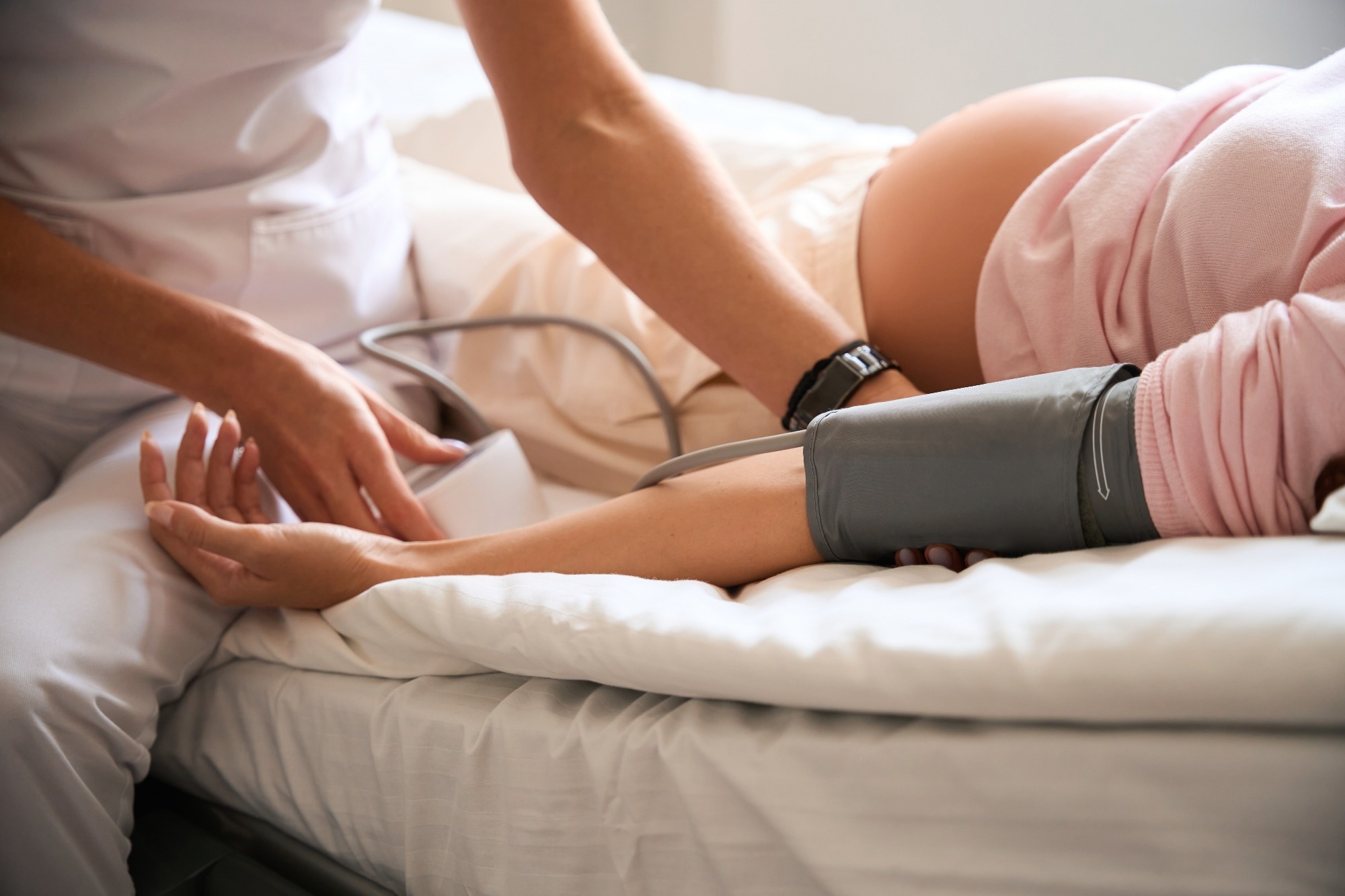A massive study from Sweden and Finland reveals that preeclampsia during a first pregnancy may reduce the risk of several common cancers, but raises the odds for endometrial cancer, offering new clues about how pregnancy complications shape long-term health.
 Study: Cancer risk after preeclampsia: a cohort study in two Nordic populations. Image Credit: Svitlana Hulko / Shutterstock
Study: Cancer risk after preeclampsia: a cohort study in two Nordic populations. Image Credit: Svitlana Hulko / Shutterstock
In a recent study published in BJC Reports, researchers hypothesized that enhanced immune activation in preeclampsia (PE) may lower future cancer risk and investigated whether preeclampsia (PE) is associated with a lower risk of cancer later in life.
PE is a hypertensive pregnancy disorder that is a significant cause for concern in pregnancy due to potential complications for the mother and fetus. While PE is cured upon delivery, the long-term consequences of PE on child and maternal health persist. Various studies have shown a higher risk of subsequent stroke, kidney disease, and cardiovascular disease (CVD) in the mother and stroke and hypertension in the child.
Additionally, PE may modulate the risk of cancer later in life. Studies have explored the links between cancer and PE, albeit they have yielded inconclusive results. That is, some studies report lower cancer incidence or no associations, while others suggest a higher cancer risk after PE. The underlying mechanisms are thought to involve immune, hormonal, and potentially genetic factors that contribute to both successful pregnancy and the risk of PE, as well as cancer development.
The study and findings
In the present study, researchers examined associations between PE and subsequent cancer risk. They utilized medical birth registry data from Finland and Sweden to identify index females who gave birth between 1978 and 2019 and 1973 and 2018, respectively. Subjects were linked to other national registers, such as the cause of death and cancer registries in both countries and the multi-generation and migration registries in Sweden.
The study exposure was a PE diagnosis at the index female’s first delivery. Further, data on cancer diagnosis dates and cancer types were retrieved from the cancer registry. Subjects were followed up from their first delivery until emigration, first cancer diagnosis, or death. Poisson regression was used to assess the association between PE diagnosis at first delivery and subsequent cancer risk, with age at delivery, parity, maternal birth year, and calendar year as the covariates.
In total, 2.33 million Swedish and 1.01 million Finnish females without cancer were included. Of these, 37,226 Finnish and 86,269 Swedish subjects had PE at first delivery. The PE group was followed up for 18 years, while the control group was followed up for 21 years. Further, 50,090 Finnish and 294,287 Swedish females developed cancer. The average age at cancer diagnosis was 49 in Finland and 47 in Sweden.
PE females had more preterm deliveries, and their newborns had lower birthweight than controls. Age at first delivery, offspring sex, and parity did not show differences between the PE and control groups. The exposure definition was based on ICD codes in both countries.
Notably, the incidence rate ratios (IRRs) were lower among PE females for any cancer in Sweden (IRR 0.91, 95% CI 0.90–0.93) but not in Finland (IRR 0.97, 95% CI 0.92–1.02), where the results did not reach statistical significance.
Besides, lower IRRs were noted for various cancer subgroups in both national cohorts, including breast cancer (IRR 0.90 in Sweden, 0.91 in Finland), cervical cancer (IRR 0.79 in Sweden, 0.55 in Finland), and lung cancer (IRR 0.72 in Sweden, 0.63 in Finland).
Conversely, PE females had a higher endometrial cancer risk in Finland (IRR 1.46) and Sweden (IRR 1.28). Results were insignificant when examined in subgroups for other rare types of cancers, such as melanoma, ovarian, colorectal, and thyroid cancers.
Fetal sex did not significantly influence overall cancer risk. However, endometrial cancer had a more pronounced effect, wherein PE females with a male fetus in the Swedish cohort (IRR 1.39) and those with a female fetus in the Finnish cohort (IRR 1.55) had increased incidence.
Carrying a male fetus was associated with a lower risk of breast cancer in the Finnish cohort (IRR 0.88). Additionally, the team identified 2.04 million full siblings of the Swedish cohort through linkage with the multi-generation register. Analysis of siblings revealed a slightly lower risk of cancer development later in life (IRR 0.97, 95% CI 0.95–0.99). This reduction was more pronounced for lung cancer (IRR 0.86, 95% CI 0.75–0.98). There were no significant differences for other cancer subtypes.
Limitations of the study include the heterogeneity and evolving diagnostic criteria of PE, the lack of data on potential confounders such as BMI, smoking, and hormone therapy, and the relatively short follow-up period for some cancers that develop at older ages.
Conclusions
The analysis of over 3.4 million females from Finland and Sweden showed an association between PE at first delivery and subsequent cancer incidence. There was a lower risk of any cancer in Swedish PE females, but the association was insignificant in the Finnish cohort. Nevertheless, analysis by cancer subtypes yielded comparable results in both cohorts, with around 10% risk reduction for breast cancer, 21–45% for cervical cancer, and 28–37% for lung cancer, depending on the country.
Notably, the risk for endometrial cancer was higher by 28–46% among PE females in both cohorts. There were no associations for other, rarer cancer subtypes. Further, the overall cancer incidence was lower among siblings of PE females in Sweden, albeit the effect was modest. Together, these findings suggest that pregnancy-induced changes and maternal characteristics may modify the odds of cancer development later in life, and that immune, hormonal, or genetic factors may underlie these associations.